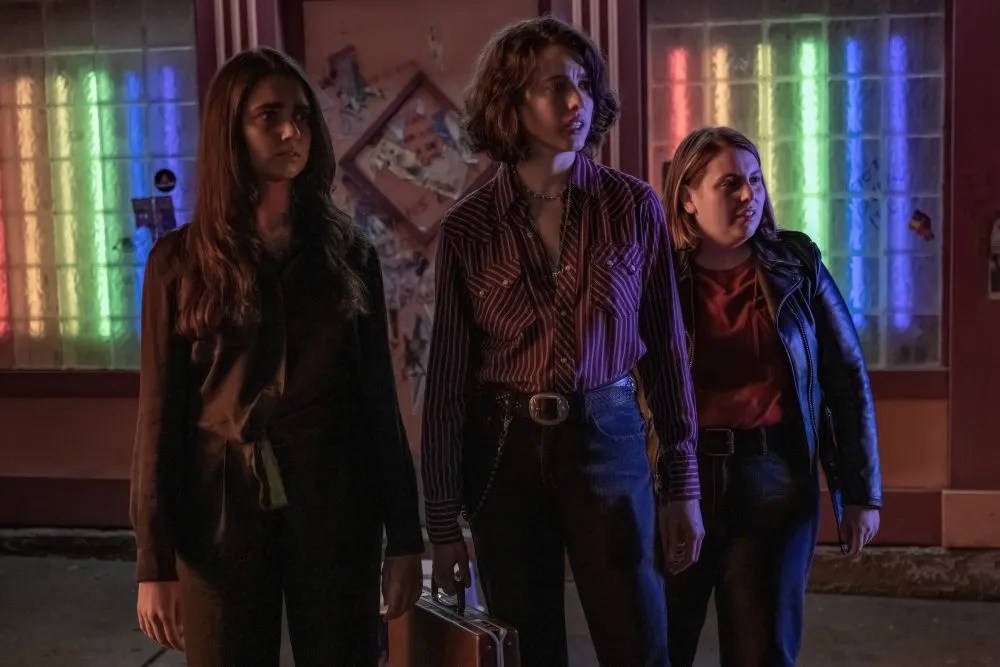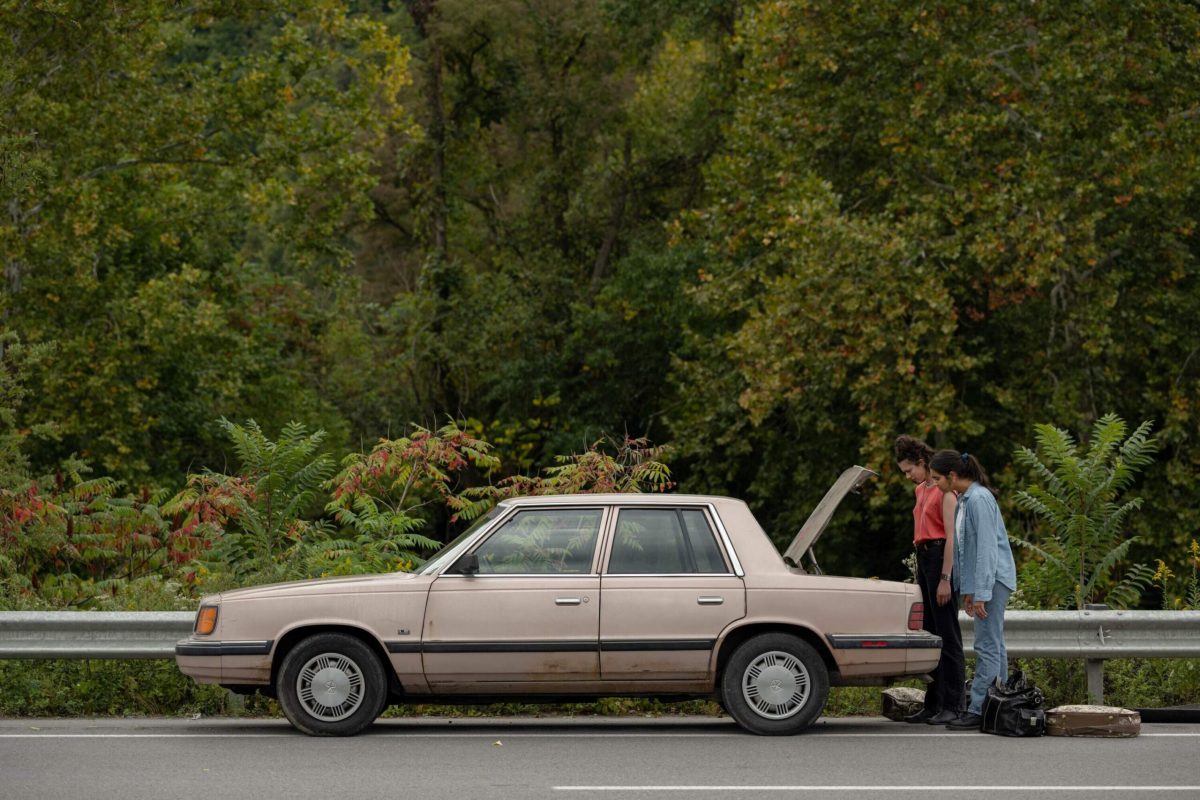Drive-Away Dolls, Ethan Coen’s first directorial venture without his brother Joel, was one of my most anticipated films of 2024. A lesbian road crime/comedy that’s as raunchy as it is ridiculous, what more could I ask for? Unfortunately, the film fell totally flat for me despite my desire to love it. While some parts worked, too much of Drive-Away Dolls ended up losing me in its succinct 84 minute runtime.
Drive-Away Dolls
Director: Ethan Coen
Release Date: February 23, 2024
Rating: R
Drive-Away Dolls, originally Drive-Away Dykes, is the brainchild of Ethan Coen and his queer wife Tricia Cooke. A collaborative project between the two that reminds audiences of the collaboration between the Coen brothers and their long-time peers, this time it feels vastly different. Authenticity in relation to queer storytelling is both important and overly simplified, resulting in discourse over who can tell what queer stories. A queer writer produces queer work, so what happens when a queer woman’s straight husband is at the helm of a project like this? A lot of choices that feel authentic end up lost in Drive-Away Dolls’s execution.
The plot of Drive-Away Dolls is rather straightforward for a road film once the editing is stripped away. Marian (Geraldine Viswanathan) is an uptight lesbian who decides to go south to Tallahassee. Joining her is her promiscuous dyke friend from Texas, Jamie (Margaret Qualley). The two lesbians get a drive-away car and make their way down from Philadelphia, accidentally carrying a mysterious briefcase with ties to a group of criminals.

From Focus Features.
As the two head to Florida, they unknowingly evade the criminals – finding themselves in seedy motels, dyke bars, and the basement of a girl’s soccer team. After they finally discover the sleek briefcase tucked away in the car’s trunk, they make a conscious effort to stay one step ahead of the men tailing them, yet still get captured. The contents of the case are finally revealed in a wacky twist that is basically impossible to predict: five dildos molded from various powerful men, though the dildo of Senator Gary Channel (Matt Damon) is currently missing.
Marian and Jamie escape, plotting to return the case to the Senator in exchange for a million dollars. Thanks to Jamie’s cop ex-girlfriend, Sukie (Beanie Feldstein), Marian and Jamie walk away with their money, and the Senator is humiliated.
The plot of Drive-Away Dolls, while ridiculous, is promising on its own merit. Following in the tradition of queer crime and road movies like Bound, Thelma and Louise, and The Living End is Drive-Away Dolls’s refusal to let its characters diminish their sexualities in a heteronormative, patriarchal world. The lesbians are directly at odds with multiple forces that seek to assimilate them, from Christianity to the commodification of sexual bodies to puritanical ideas revolving around sex (and sex toys). In a world where sex and women’s bodies are simultaneously objectified yet repulsed by men, Drive-Away Dolls finds strength in flipping this narrative – lesbians are portrayed as sexually liberated beings, both in control of their own autonomy and their desire for one another. Desire and repression are shown as two sides of the same coin, and as with most queer identities, the struggle for balance is represented within the film’s main characters.

From Focus Features.
Unfortunately, this leads to why I started to dislike Drive-Away Dolls. The difference in how Marian and Jamie express their sexuality, while symbolic of its fluidity, ultimately reinforces stereotypes about women’s sexuality. Jamie, a serial cheater who engages in many one-night stands, is empowering in her refusal to act shy about her desires. However, her character starts and ends there. Aside from her abysmally over-the-top Southern accent, Jamie’s character has no growth and no substance besides her sexuality. Normally, I wouldn’t care so much about her startling character and unabashed raunchiness (I love messy lesbians!) if it didn’t feel like it was supposed to only be a comic relief rather than a genuine expression of lesbian sexuality.
Marian, at least, does have character growth and some interiority that reflects the fluidity of lesbianism. Where Jamie is written as a caricature, Marian is the force that keeps Drive-Away Dolls from veering into a circus of one-dimensional characters. But the choice to push these two characters together romantically and sexually at the end of the film doesn’t feel organic. I think Viswanathan and Qualley’s chemistry loses steam once they cross the boundary of friends to lovers, missing a crucial piece that would have made this decision believable for these characters.
Together, these two lesbians are a mirror held up to a society that is afraid of lesbian empowerment. They operate in their own world, with their own rules. My own ventures into lesbian nightlife reveal a second world, one that cis and straight people are unaware of. Throughout the film, Marian and Jamie’s lesbianism is the shield that protects them from the wrath of the hetero world: the dyke clubs and language that confuse the straight men in the story and the same men’s refusal to “hit” a woman end up securing the lesbians as the “winners” of this story.

From Focus Features.
Up to this point (and aside from Jamie’s characterization), I could still have enjoyed Drive-Away Dolls. However, there is one element of the film that I just really did not like: the editing. As someone who has liked films with the types of cuts and transitions that are a little baffling in their corniness – Edgar Wright’s Scott Pilgrim vs the World, anyone? – the editing in Drive-Away Dolls often disrupted the pacing. Although there is a certain camp that can be found in “bad” or off-putting creative choices, here it just feels lazy. The sex scenes (and even Jamie’s horrendous accent) I can believe are camp, but some of the editing is so thrown together that it removes any sincerity from these moments. The weird psychedelic scenes are disrupting and overdrawn, and the random wipes don’t fit in a world that is otherwise grounded in some type of sincerity. There were a few cuts like this that did actually work, but these were unfortunately shadowed by the rest of the film’s nonsensical cutting.
Perhaps Drive-Away Dolls is one of those films that I will look back on in a different environment years from now and feel like I was quick to judge. I can certainly see how this film might work as a cult classic. For now, I can appreciate the glimmers of something special hidden throughout the film that are otherwise bogged down by messy execution and the unfortunate truth that it is a rare occasion where a straight man makes a truly good lesbian movie, no matter who he’s married to.

